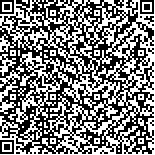高凡斯,刘亚丹,黄剑平,等.运动训练对血管性认知障碍大鼠记忆能力及海马区Sema3G/Nrp2/PlexinA4信号通路的影响[J].中华物理医学与康复杂志,2025,47(8):679-686
扫码阅读全文

|
| 运动训练对血管性认知障碍大鼠记忆能力及海马区Sema3G/Nrp2/PlexinA4信号通路的影响 |
|
| |
| DOI:10.3760/cma.j.cn421666-20240826-00686 |
| 中文关键词: 运动训练 血管性认知障碍 记忆功能 海马 Sema3G/Nrp2/PlexinA4信号通路 |
| 英文关键词: Exercise Vascular cognitive impairment Memory function Hippocampus Sema3G/Nrp2/PlexinA4 signaling pathway |
| 基金项目:国家自然科学基金(81902284);广东省自然科学基金(2022A1515012510);广东省医学科学技术研究基金项目(A2022533);深圳市南山区卫生健康系统科技重大项目(NSZD2023006);深圳市南山区教育(卫生)科技项目(NS2022003) |
|
| 摘要点击次数: 787 |
| 全文下载次数: 670 |
| 中文摘要: |
| 目的 探讨运动训练对血管性认知障碍(VCI)大鼠记忆能力及海马区Sema3G/神经纤毛蛋白-2(Nrp2)/PlexinA4信号通路的影响。 方法 将18只SD雄性大鼠按照随机数字表法分为假手术组、模型组、运动组,每组6只。模型组、运动组采用双侧颈总动脉闭塞法制作VCI模型,假手术组进行相同实验操作,但不进行血管结扎和剪切。术后48 h,对运动组大鼠予以跑步机运动干预,假手术组、模型组大鼠在每日同时段内被轮流置于未启动的相同跑步机内,每日30 min,每周5 d,共4周。干预4周后,采用新事物识别(NOR)实验和Y迷宫实验评估3组大鼠的认知功能,采用免疫印迹法检测大鼠海马区Sema3G、Nrp2、PlexinA4和Rac1的表达情况,利用免疫荧光染色法观察海马区Nrp2和PlexinA4的分布情况。 结果 与模型组比较,运动组大鼠干预4周后的短时记忆实验期NOR指数、长时记忆实验期NOR指数均升高,在Y迷宫中探索N臂的总时长增加(P<0.05)。免疫印迹结果显示,与模型组比较,运动组大鼠海马区Sema3G、PlexinA4和Rac1的表达水平显著升高(P<0.05)。免疫荧光结果显示,与模型组比较,运动组大鼠海马CA1、CA3、齿状回的PlexinA4荧光强度增加(P<0.05),CA3区的Nrp2荧光强度增加(P<0.05)。运动组大鼠海马CA1、CA3、齿状回区Nrp2/PlexinA4的Pearson相关系数均较模型组显著提高(P<0.05)。 结论 运动训练可明显改善VCI大鼠的记忆能力,其作用机制可能与激活海马区Sema3G/Nrp2/PlexinA4信号通路有关。 |
| 英文摘要: |
| Objective To explore the effect of exercise on the memory of rats modeling vascular cognitive impairment (VCI) and also its effects on the hippocampal Sema3G/neuropilin-2 (Nrp2)/PlexinA4 signaling pathway. Methods Eighteen male Sprague-Dawley rats were randomly divided into a sham-operated group, a model group, and an exercise group, each of 6. The model and exercise groups underwent VCI modeling via bilateral common carotid artery occlusion, while the sham-operated group received the same surgical procedure without vessel ligation or transection. Beginning forty-eight hours after the surgery, the exercise group carried out daily 30-minute treadmill training sessions, 5 days a week, for a total of 4 weeks, while the other two groups were placed on the same treadmill with it not in operation. After the intervention, cognitive functioning was assessed using the novel object recognition (NOR) test and a Y-maze test. Western blotting was employed to evaluate the expression of Sema3G, Nrp2, PlexinA4, and Rac1 in the hippocampus. Immunofluorescence staining was used to observe the distribution of Nrp2 and PlexinA4 in the hippocampus. Results Compared with the model group, the exercise group exhibited significantly higher NOR indices during both the short-term and long-term memory testing phases after the intervention. Those rats also tended to have significantly longer total exploration times in the novel arm of the Y-maze test. The western blotting revealed that the expression levels of Sema3G, PlexinA4, and Rac1 in the hippocampus were significantly higher in the exercise group compared to the model group, on average. Immunofluorescence showed significantly increased PlexinA4 fluorescence intensity in the CA1, CA3, and dentate gyrus (DG) regions of the hippocampus, and significantly elevated Nrp2 fluorescence intensity in the CA3 region in the exercise group compared to the model group. The Pearson correlation coefficients for Nrp2/PlexinA4 co-localization in the CA1, CA3 and DG regions were significantly higher in the exercise group than in the model group. Conclusions Exercise training significantly improves memory function in rats with VCI, and this effect may be associated with activation of the hippocampal Sema3G/Nrp2/PlexinA4 signaling pathway. |
|
查看全文
查看/发表评论 下载PDF阅读器 |
| 关闭 |
|
|
|